#agriculture in a time of climate change
Text
youtube
I thought I'd use Solarpunk Action Week as an excuse to start reducing our diet's reliance on the top four of the ten staple crops--maize, rice, wheat, potatoes, cassava, soybeans, sweet potatoes, yams, sorghum, and plantain--that humanity is overly reliant upon.
I cooked up some amaranth to go with a lentil-tomato-feta salad and braised collard greens. The little pile of nutty amaranth was viewed initially with skepticism, but the ultimate verdict was two thumbs up.
In the future, I'll try to set aside one or two days a week where we eat amaranth or quinoa instead of rice, wheat, potatoes, or even sweet potatoes as our carb.
-Christina
#solarpunk#Solarpunk Presents Podcast#podcast#podcasting#amaranth#diversify your diet#beluga lentils#lentil-tomato-feta salad#collard greens#cooking#dinner ideas#solarpunk diet#quinoa#staple crops#carbohydrates#carbs#rice#wheat#potatoes#sweet potatoes#ancient grains#solarpunk action week#SPAW#garden fresh eating#food from the garden#edible plants#diversity of the human diet#agriculture#climate change#agriculture in a time of climate change
9 notes
·
View notes
Text
"A century of gradual reforestation across the American East and Southeast has kept the region cooler than it otherwise would have become, a new study shows.
The pioneering study of progress shows how the last 25 years of accelerated reforestation around the world might significantly pay off in the second half of the 21st century.
Using a variety of calculative methods and estimations based on satellite and temperature data from weather stations, the authors determined that forests in the eastern United States cool the land surface by 1.8 – 3.6°F annually compared to nearby grasslands and croplands, with the strongest effect seen in summer, when cooling amounts to 3.6 – 9°F.
The younger the forest, the more this cooling effect was detected, with forest trees between 20 and 40 years old offering the coolest temperatures underneath.
“The reforestation has been remarkable and we have shown this has translated into the surrounding air temperature,” Mallory Barnes, an environmental scientist at Indiana University who led the research, told The Guardian.
“Moving forward, we need to think about tree planting not just as a way to absorb carbon dioxide but also the cooling effects in adapting for climate change, to help cities be resilient against these very hot temperatures.”
The cooling of the land surface affected the air near ground level as well, with a stepwise reduction in heat linked to reductions in near-surface air temps.
“Analyses of historical land cover and air temperature trends showed that the cooling benefits of reforestation extend across the landscape,” the authors write. “Locations surrounded by reforestation were up to 1.8°F cooler than neighboring locations that did not undergo land cover change, and areas dominated by regrowing forests were associated with cooling temperature trends in much of the Eastern United States.”
By the 1930s, forest cover loss in the eastern states like the Carolinas and Mississippi had stopped, as the descendants of European settlers moved in greater and greater numbers into cities and marginal agricultural land was abandoned.
The Civilian Conservation Corps undertook large replanting efforts of forests that had been cleared, and this is believed to be what is causing the lower average temperatures observed in the study data.
However, the authors note that other causes, like more sophisticated crop irrigation and increases in airborne pollutants that block incoming sunlight, may have also contributed to the lowering of temperatures over time. They also note that tree planting might not always produce this effect, such as in the boreal zone where increases in trees are linked with increases in humidity that way raise average temperatures."
-via Good News Network, February 20, 2024
#trees#forests#reforestation#tree planting#global warming#climate change#climate crisis#american south#the south#eastern us#southern usa#conservation#meteorology#global temperature#conservation news#climate news#environment#hope#good news#hope posting#climate action#climate science#climate catastrophe#climate hope
13K notes
·
View notes
Text
Gotta inform my international besties that a lot of German farmers are currently protesting against new climate laws and the community and their protests are in coalition with neonazis, culminating almost in an attack on the economy minister of the Green Party yesterday. This is totally normal and absolutely nothing to worry about.
https://www.reuters.com/markets/europe/german-agriculture-minister-vows-no-more-concessions-farmers-demands-2024-01-05/
#german politics#I feel like it’s time to finally talk about vergesellschaftung and enteignung#right wing extremism#agriculture#climate change#climate politics#Idk why Reuters put a picture of özdemir in the article and not one of habeck
0 notes
Text
Justice 40
Joe Biden is boring and often bad at tooting his own horn, but by god, he is good at process.
Justice 40 is simple but powerful application of that. its a shift in how the executive branch works. 40% of money from a bunch of existing programs should go to census tracts that are overburdened with pollution, at higher risk for climate change, and have been historically underserved.
The shorthand here is basically "communities that don't have enough internal resources to deal with long term problems". So yes, communities that had been redlined for decades, ones that have Superfund sites, ones that have high rates of asthma from air pollution.
and this is by census tract. Not city. census tract. So parts of New York City qualify... but other parts don't. And the city HAS to use the money in the targeted part. it doesn't go into the communal pool. it's for THAT tract specifically.
Also all land federally recognized as belonging to a Native American tribe and all Alaskan Native Villages qualify, specifically.
And again, this is for existing programs that are already running and have existing staff and budgets. They're supposed to prioritize grants and projects for those areas specifically. And that's everything from Department of Agriculture, to FEMA, to Labor, to Environmental Protection.
Does it instantly get rid of all the baked in racism from decades past? No, not even close. But it puts in a countermeasure that has a concrete and measurable goal to aim for rather than a nebulous "suck less." even if the administration changes, many of those changes will stick.
And as things improve, some tracts may come off the list! Some may go on that weren't there before!
You can see a map here. Blue highlighted tracts are "disadvantaged" so qualify for that extra assistance! Check and see if you live in one or part of your town does. Because if you've been hearing constantly "we can't afford to fix X problem..." and you're in that tract.... there's money available. For you. Build that sidewalk, fix those lead pipes, get that brush truck your volunteer fire department has been asking for.
And tell your local officials that! "did you look at Justice 40 for funding". And even if they're doing their best, particularly people in little towns.... being a government official isn't their full time job. They may have missed it. Just asking them about the program may suddenly open a world of possibilities.
9K notes
·
View notes
Note
What progress at home has biden enacted? What policies of his show that he is making progress that prove he is actually different than trump?
I like to pretend I have faith in humanity, so I'll answer as if you're asking this in good faith.
Biden's DEA has lifted restrictions on telehealth prescriptions to make appointments and assistance more accessible.
He put a funding package into place to help unhoused people get access to mental and physical healthcare, as well as short-term and long-term housing.
He has attempted and is still attempting to get student debt relief through - this was blocked by Republican judges appointed by Trump, but he's still working on it.
Infrastructure repair - his administration has budgeted funds to actually fix some severely-damaged and frequently-traveled bridges.
Trying to expand access to healthcare to include undocumented immigrants who came to the USA as children (Dreamers) under the Affordable Care Act. Support for Navigator programs and outreach has also been increased.
He has vetoed Republican-led bills that were attempting to overturn environmental protections - one that would have forbidden investment fund managers to consider climate change in their portfolios (I have two degrees in accounting and this is actually huge), and another that would have overturned restrictions on agricultural runoff into our waterways.
He and his administration worked for ages to get rail workers paid sick days.
This is just some of what he's been doing. Meanwhile, Trump and other Republicans want to criminalize the lives of LGBT people like you and me. They want to eliminate no-fault divorce and force births that will kill parents or devastate them financially. They have stated flat out that they want to install a military dictatorship in the USA. They attempted to put that in motion on January 6th, 2021. They failed once. They will do better next time.
One party wants to house the homeless and expand social safety nets, while the other one wants to criminalize homelessness. One of them wants a future in which I might be able to vote to change how much of a war machine my country is, while the other one wants to eliminate my ability to vote entirely. Those are not the same. Those literally are opposites.
At the end of the day, all you and I can do is choose to do the least amount of harm possible. You and I cannot choose to do no harm. This is the USA, we sell war, you and I cannot choose to do no harm. I wish we could, my god do I wish we could, but that is not an option. So we grieve for the harm we couldn't eliminate and work to minimize the harm that is done. Despite all the crap they support, Democrats are the minimum amount of harm right now. Acting like they aren't is exactly what brought us to an election where our options are a future where we are either wading in blood or drowning in it.
Not voting for Biden will not help Palestine. Not voting for Biden will guarantee a Republican president who will make the situation in Palestine WORSE. AND it'll hurt a lot of other places as well, both at home and abroad, because Republicans are about business and the USA is in the business of war! And I would very much like that to change someday! I would very much like to someday be able to choose to do no harm! And I know what I have to do to try for that future, so what are YOU going to do? There is no standing off to the side in this. If you aren't helping pull, you're the dead weight we're pulling. Are you going to dig your feet into the mud and blood and drown us there? Or are you going to get the fuck off your ass, grit your teeth, and help us pull free?
#askbasket#iam-the-wild#us politics#israel#palestine#if you do not vote blue you do not get to call yourself an antifascist#i HATE that that's the case; don't mistake me#but that is the reality we're working with#there isn't any other#do nothing and kill five people or act and kill one.#so what are you gonna do? i can't choose for you. but i know what my choice is.#i'm part of this world. and as much as i hate it...turning away is not one of the options.#we fight on ALL fronts#we protest we donate we write we call#AND WE ALSO FUCKING VOTE FOR THE LEAST OF THE EVILS. BECAUSE NO EVIL IS NOT AN OPTION.
3K notes
·
View notes
Text
Bad Newts: Amphibians are in Serious Trouble
My colleagues and I have just had a paper published in Nature, based on our efforts to assess almost all amphibian species for the IUCN Red Lists. The major takeaway messages:
It is a bad time to be an amphibian
Two fifths of all amphibians are threatened with extinction.
Salamanders are the most threatened group; three fifths of all salamanders are threatened with extinction!
Climate change is a major driver of amphibian declines globally
Habitat loss, especially due to agriculture, is a problem for the vast majority of amphibians
Chytrid pandemics have caused and continue to cause catastrophic declines of both salamanders and frogs
Protected areas and careful management are working as strategies! They are actively improving the outlook of some species
As many as 222 amphibian species may have gone extinct in recent times; of those, 185 are suspected extinct but not yet confirmed.
Our paper is Open Access, you can read it here!
Photo of Atelopus hoogmoedi by Jaime Culebras, used with permission
#frogs#science#news#biology#zoology#newts#salamanders#amphibians#Nature#it's all over me#conservation#bad news bears#animals#this is my first Nature paper#sure I am just one of >100 authors#but I am still very excited#can you tell?#I wish I could write more about this#but I am in a grant crunch so no time#and also I have to run off to play d&d in like ten minutes#so here we are
3K notes
·
View notes
Text
There is a growing body of physiological, anatomical, ethnographic, and archaeological evidence to suggest that not only did women hunt in our evolutionary past, but they may well have been better suited for such an endurance-dependent activity.
We are both biological anthropologists. I (co-author Cara) specialize in the physiology of humans who live in extreme conditions, using my research to reconstruct how our ancestors may have adapted to different climates. And I (co-author Sarah) study Neanderthal and early modern human health. I also excavate at their archaeological sites.
It’s not uncommon for scientists like us—who attempt to include the contributions of all individuals, regardless of sex and gender, in reconstructions of our evolutionary past—to be accused of rewriting the past to fulfill a politically correct, woke agenda. The actual evidence speaks for itself, though: Gendered labor roles did not exist in the Paleolithic era, which lasted from 3.3 million years ago until 12,000 years ago. The story is written in human bodies, now and in the past.
[...]
Our Neanderthal cousins, a group of humans who lived across Western and Central Eurasia approximately 250,000 to 40,000 years ago, formed small, highly nomadic bands. Fossil evidence shows females and males experienced the same bony traumas across their bodies—a signature of a hard life hunting deer, aurochs, and woolly mammoths. Tooth wear that results from using the front teeth as a third hand, likely in tasks like tanning hides, is equally evident across females and males.
This nongendered picture should not be surprising when you imagine small-group living. Everyone needs to contribute to the tasks necessary for group survival—chiefly, producing food and shelter, and raising children. Individual mothers are not solely responsible for their children; in forager communities, the whole group contributes to child care.
You might imagine this unified labor strategy then changed in early modern humans, but archaeological and anatomical evidence shows it did not. Upper Paleolithic modern humans leaving Africa and entering Europe and Asia show very few sexed differences in trauma and repetitive motion wear. One difference is more evidence of “thrower’s elbow” in males than females, though some females shared these pathologies.
And this was also the time when people were innovating with hunting technologies like atlatls (spear throwers), fishing hooks and nets, and bow and arrows���alleviating some of the wear and tear hunting would take on their bodies. A recent archaeological experiment found that using atlatls decreased sex differences in the speed of spears thrown by contemporary men and women.
Even in death, there are no sexed differences in how Neanderthals or modern humans buried their dead or the goods affiliated with their graves. These indicators of differential gendered social status do not arrive until agriculture, with its stratified economic system and monopolizable resources.
All this evidence suggests Paleolithic women and men did not occupy differing roles or social realms.
1K notes
·
View notes
Text
Just spent a couple hours digging into this book. I'm not even sure what has worse environmental impacts, the paper the book is made of or the opinions printed within.
Is "post-colonial" literary theory a joke? It's distressing that a book printed in 2021 by a reputable academic press can be so painfully Eurocentric, and I mean PAINFULLY. The philosophical and literary frameworks drawn upon in most chapters are like what some British guy in 1802 would come up with. In most of the chapters, every framework, terminology, and example is inseparably fused to Latin, Greek, and/or Christian philosophers, myths and texts, even down to the specific turns of phrase. You would think only Europeans had history or ideas until the 20th century.
Don't get me wrong, non-european and even specifically anti-colonial sources are used, and I don't think all the writers are white people, but...that's what's so weird and off-putting about it, most of the book as a whole utterly fails to absorb anything from non-European and in particular anti-colonial points of view. The chapters will quote those points of view but not incorporate them or really give their ideas the time of day, just go right back to acting like Plato and Aristotle and Romantic poets are the gold standard for defining what it means to be human.
In brief, the book is trying to examine how literature can shed light on the climate crisis, which is funny because it completely fails to demonstrate that literature is good or helpful for the climate crisis. Like that is for sure one major issue with it, it shows that people *have* written stuff about climate change, but it sure doesn't convince you that this stuff is good.
Most of the works quoted are rather doomerist, and a lot of the narrative works specifically are apocalypse tales where most of Earth's population dies. The most coherent function the authors can propose that literature fulfills is to essentially help people understand how bad things are. One of the essays even argues that poetry and other creative work that simply appreciates nature is basically outdated, because:
“One could no longer imagine wandering lonely as a cloud, because clouds now jostle in our imaginations with an awareness of atmospheric concentrations of carbon dioxide and other atmospheric pollutants” (Mandy Bloomfield, pg. 72)
Skill issue, Mandy.
The menace of doomerism in fiction and poetry is addressed, by Byron Caminero-Santangelo, on page 127 when he references,
the literary non-fiction of a growing number of authors who explicitly assert, some might even say embrace, the equation between fatalistic apocalyptic narrative and enlightenment…they are authoritative in their rejection of any hope and in their representation of mitigatory action as the cliched moving of deckchairs on a sinking ship
He quotes an essay “Elegy for a country’s seasons” by Zadie Smith, who says: “The fatalists have the luxury of focusing on an eschatological apocalyptic narrative and on the nostalgia of elegy, as well as of escape from uncertainty and responsibility to act." Which is spot-on and accurate, but these observations aren't recognized as a menace to positive action, nor is the parallel to Christian thought that eagerly looks forward to Earth's destruction as a cathartic release from its pain made fully explicit and analyzed. Most of the creative works referenced and quoted in the book ARE this exact type of fatalistic, elegiac performance of mourning.
I basically quit reading after Chapter 11, "Animals," by Eileen Crist, which begins:
The humanization of the world began unfolding when agricultural humans separated themselves from wild nature, and started to tame landscapes, subjugate and domesticate animals and plants, treat wild animals as enemies of flocks and fields, engineer freshwater ecologies, and open their psyches to the meme of the ‘the human’ as world conquerer, ruler and owner.
This is what I'm talking about when I say it's dripping Eurocentrism; these ideas are NOT universal, and it's adding nothing to the world to write them because they fall perfectly in line with what the European colonizing culture already believes, complete with the lingering ghost of a reference to the Fall of Man and banishment from the Garden of Eden. It keeps going:
“Over time, the new human elaborated a view of the animal that ruptured from the totemic, shamanic and relational past.”
Okay so now she's introducing the idea of progression from shamanic nature-worshipping religions of our primitive past...hmm I'm sure this isn't going anywhere bad
“While humanity has largely rejected the colonizing project with respect to fellow humans, the occupation of non-human nature constitutes civilization’s last bastion of ‘normal’ colonialism. A new humanity is bound sooner or later to recognize and overthrow a colonialism of ‘nature,’ embracing a universal norm of interspecies justice.” (pg. 206)
OKAY????
Not only denying that colonialism still exists, but also saying that humans' relationship with nature constitutes colonialism??
Embracing limitations means scaling down the human presence on demographic and economic fronts…(pg.207)
ope, there's the "we have to reduce the human population"
Embracing limitations further mandates pulling back from vast expanses of the natural world, thus letting the lavishness of wild (free) nature rule Earth again” (pg. 207)
aaaaaaand there's the "we have to remove humans from wild nature so it can be freeeeeee"
don't get me wrong like I am a random white person with no particular expertise in anti-colonialist thought but I think this is an easy one. I'm pretty sure if your view of nature is that colonialism involving subjugating humans doesn't exist any more and actually humans existing in and altering nature is the real colonialism so we should remove humans from vast tracts of earth, your opinion is just bad.
Anyways y'all know I have an axe to grind against doomerism so it was probably obvious where this was going but good grief.
706 notes
·
View notes
Text
Things Biden and the Democrats did, this week #3
Jan 26-Feb 2 2024
The House overwhelmingly passed a tax deal that will revive the expanded Child Tax Credit, this will effect 16 million American children and lift 400,000 out of poverty in the first year. The deal also supports the building of 200,000 housing units over the next two years, and provides tax relief for communities hit by disasters.
The Biden Administration has begun negotiations on drug prices for Medicare. Earlier this year the administration announced it would negotiate for the first time directly with drug manufacturers on the prices of 10 common medications. This week they sent their opening offers to the companies. The program is expected to save Medicare and enrollees billions over dollars over the long term and help push down drug prices for everyone.
The Department of Transportation has green lit $240 Million to modernize air ports across the country. Air Ports in 37 states will be able to get much needed updates and refurbishment.
The Biden Administration announced 10 sites across America as sites for innovation investment. They will receive up to 2 billion dollars each over the next 10 years. The goal is to stimulate economic growth and innovation in semiconductor manufacturing, clean energy, sustainable textiles, climate-resilient agriculture, regenerative medicine, and more.
The State Department reviews options for recognizing Palestinian Statehood. While as of yet there's been no policy change this review of options is a major shift in US diplomatic thinking which has long opposed Palestinian Statehood and shows a seriousness of reported Biden plans to push for Statehood as part of a post-war Israel-Saudi normalization deal.
President Biden imposes sanctions on Israeli settlers who have engaged in violence against Palestinians and peace activists. This marks the first time the US has leveled sanctions against Israelis and sets up a standard that could see the whole settlement movement cut off from the US financial system
the Department of Energy has tentatively agreed to a $1.5 Billion dollar loan to help reopen a Michigan nuclear power plant. This would mark the first time a closed nuclear plant has been brought back online. Closed in 2022 it's hoped that it could reopen in time to be generating power in late 2025. This is part of Biden's plan to decarbonize the electricity grid by 2035.
the Internal Revenue Service launched a program to allow tax fillers file for free directly with the government. In 2024 its a pilot program limited to 12 states, but plans for it to be nation wide by tax day 2025
The Department of Health and Human Services announced $28 million in grants to help with the treatment of substance use disorder, including a program aimed at pregnant and postpartum women, and expanded drug court aimed at directing people into treatment and out of the criminal justice system.
The Department of Energy announced $72 million for 46 hydroelectric projects across 19 states. This marks the single largest investment in Hydropower in US history.
The Senate confirmed President Biden's 175th federal judge. Biden has now appointed more federal judges in his first term in office than President Obama did in his, however still lags behind Trump's 186 judges. For the first time in history a majority of a President's nominees are not white men, 65% of them are women and 65% are people of color, President Biden has appointed more black women to judgeships than any administration in history.
#Joe Biden#Thanks Biden#good news#us politics#politics#Democrats#Poverty#Climate change#nuclear power#Israel#israeli settlers#Palestine#israel palestine conflict
802 notes
·
View notes
Note
How to write the heat?
Quick Tips on How to Write Heat
Heat can have many connotations in your stories beyond just temperature. It can be a sensation, an event, or even a metaphor for something else. The way a character internalises or experiences heat will also be unique to them, so here are some quick tips on how to use imagery to convey heat in a variety of ways.
In Nature
Use colours like red, yellow, or orange
Parched scenery, like cracked earth and dry leaves
Bright sunlight
Mirages
Blistering winds
Heat waves radiating from hot asphalt
Animals huddling in the shade
Wide and barren landscapes
Hot sand to contrast with cool water
Wilting vegetation and a change in colour
The sound of cicadas
Foods and Objects
Hot peppers with bright colours
Spicy dishes (and how characters handle them)
Melting ice cream and frozen drinks
The sizzling sound of food in a hot pan
The smell of a barbeque
Cold drinks that provide relief
Flip flops, shorts, and tank tops
Sunscreen and hats
Metal and leather that is too hot to touch
Salt or minerals left on surfaces after liquid evaporates
Faded colours on objects left in the sun
Peeling paint
The hiss of steam from a kettle
Character Moods
Short-tempered
Lazy
Discomfort
Easily frustrated
Disinterested
Relaxed
Energised
Joyful
Exhausted
Adventurous
Anxious
Fearful
Irritable
Lethargic
Contemplative
Restless
Overwhelmed
Rejuvenated
Impatient
Distracted
Apprehensive
Isolated
Embarrassed
Motivated
Character Body Language
Wiping sweat from their faces
Fanning themselves
Shifting uncomfortable
Sluggish movements
Licking lips and swallowing due to dehydration
Shedding layers of clothing
Unconsciously moving toward the shade
Constantly drinking
Breathing heavily
Squinting or shielding eyes
Flushed skin
Panting or shallow breathing
Avoiding physical contact
Actions and Events
Seeking shelter during a heatwave
Roadtrips in a hot car with the windows open
Swimming at a pool, lake, or a beach
Sharing drinks with friends at a cafe, bar, or beer garden
Planning holidays to cooler climates
Staying indoors to read to watch TV where it’s cool
Watching the sunset or sunrise when it’s cooler
Going out at night to avoid the heat of the day
Beach parties and barbeques
Wildfire warnings
Outdoor markets and garage sales
Camping trips
Positive Aspects
Heat can be a time of joy, where families and friends can enjoy time together doing outdoor activities not available to them the rest of the year. Food becomes lighter, the days are longer, and people tend to get more exercise. There are also positive ways to describe the juxtaposition of something hot after immediately experiencing the cold, like a hot drink on a cold day.
Negative Aspects
Not every association with heat is positive. Hot weather brings environmental damage like droughts and wildfires that affect agriculture and wildlife. It can also lead to physical discomfort, like heat rash, dehydration, sunburn, sleep disruption, or being forced to work or exercise in uncomfortable environments.
Helpful Synonyms
Scorching
Blistering
Temperate
Boiling
Fiery
Burning
Inferno
Glowing
Simmering
Sweltering
Torrid
Steaming
Tropical
Flaming
Feverish
Stifling
Roasting
Searing
Tropical
Radiant
Common metaphors
Passion or desire
Anger and conflict
Pressure or stress
Excitement and energy
Change or transformation
Danger or warning
Life and vitality
#writers#creative writing#writing#writing community#writers of tumblr#creative writers#writeblr#writing inspiration#writerblr#writing tips#writblr#writing advice#writing resources#quick writing tips#creative writing tips#references for writers#writing references#let's write#learn to write#how to write#writing help#writer tips#writers corner#writers community#advice for writers#help for writers#helping writers#writing setting#writing characters
720 notes
·
View notes
Text
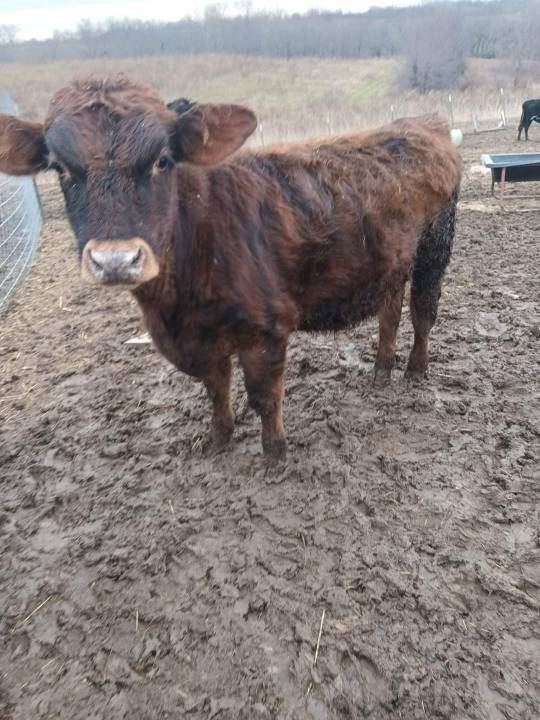

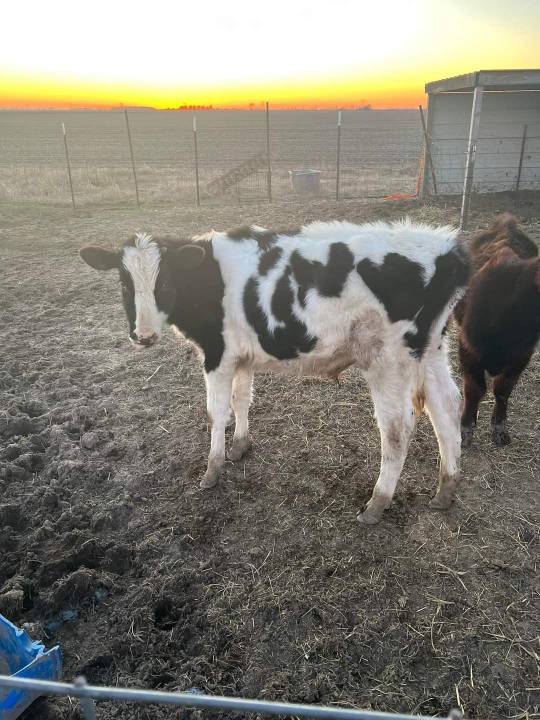

You may not want to hear this, but none of these cows in the above pictures are being neglected or abused. That last cropped picture is actually from a bigger farm as well during the storms happening during the Loon fallout event.
Mud is a completely normal part of raising livestock, especially in places where it gets wet and rainy during different parts of the year. Even the driest climates will experience a build-up of manure and mud around feeding and watering locations since livestock likes to hang out there for obvious reasons.
The idyllic pictures you see of cows in green pastures likely have a rotational grazing setup or large amounts of land, which isn't possible or feasible for most small farmers. Pastures in this state are a common side effect of having large livestock, but even chickens, goats, and dogs can turn a pasture into dirt if the pasture can't get rest. It doesn't mean the animals are getting neglected or abused, and anyone who says otherwise is likely coming from a place of privilege or ignorance.
The suicide rate for agricultural workers is five times higher than the general population. Farmers experience more debt, indignity, and isolation compared to the general population and what sucks is when I talk about this I get replies that are like "just choose a different profession" when these people are how your getting fed. Food does not magically manifest in the grocery store it comes from farmers, and farmer depression is a global crisis.
I'm sure there are some people who are uncomfortable with those photos but I want you to sit in that discomfort and realize that when you buy beef from the store it's not unlikely that that cow stood on a muddy floor and that cows have been standing in muddy pastures for thousands of years.
This isn't a post bashing rotational grazing and other forms of pasture management. I just think it's ignorant to assume these animals are being neglected because their pasture is muddy and that their owners arent always looking for ways to change that. This stuff does make it harder for people to share their troubles or profession. The cows above likely have less hoof issues then cows only on sand, metal grates, or concrete.

Memes like the above exist for a reason.
311 notes
·
View notes
Text
The World's Forests Are Doing Much Better Than We Think
You might be surprised to discover... that many of the world’s woodlands are in a surprisingly good condition. The destruction of tropical forests gets so much (justified) attention that we’re at risk of missing how much progress we’re making in cooler climates.
That’s a mistake. The slow recovery of temperate and polar forests won’t be enough to offset global warming, without radical reductions in carbon emissions. Even so, it’s evidence that we’re capable of reversing the damage from the oldest form of human-induced climate change — and can do the same again.
Take England. Forest coverage now is greater than at any time since the Black Death nearly 700 years ago, with some 1.33 million hectares of the country covered in woodlands. The UK as a whole has nearly three times as much forest as it did at the start of the 20th century.
That’s not by a long way the most impressive performance. China’s forests have increased by about 607,000 square kilometers since 1992, a region the size of Ukraine. The European Union has added an area equivalent to Cambodia to its woodlands, while the US and India have together planted forests that would cover Bangladesh in an unbroken canopy of leaves.
Logging in the tropics means that the world as a whole is still losing trees. Brazil alone removed enough woodland since 1992 to counteract all the growth in China, the EU and US put together. Even so, the planet’s forests as a whole may no longer be contributing to the warming of the planet. On net, they probably sucked about 200 million metric tons of carbon dioxide from the atmosphere each year between 2011 and 2020, according to a 2021 study. The CO2 taken up by trees narrowly exceeded the amount released by deforestation. That’s a drop in the ocean next to the 53.8 billion tons of greenhouse gases emitted in 2022 — but it’s a sign that not every climate indicator is pointing toward doom...
More than a quarter of Japan is covered with planted forests that in many cases are so old they’re barely recognized as such. Forest cover reached its lowest extent during World War II, when trees were felled by the million to provide fuel for a resource-poor nation’s war machine. Akita prefecture in the north of Honshu island was so denuded in the early 19th century that it needed to import firewood. These days, its lush woodlands are a major draw for tourists.
It’s a similar picture in Scandinavia and Central Europe, where the spread of forests onto unproductive agricultural land, combined with the decline of wood-based industries and better management of remaining stands, has resulted in extensive regrowth since the mid-20th century. Forests cover about 15% of Denmark, compared to 2% to 3% at the start of the 19th century.
Even tropical deforestation has slowed drastically since the 1990s, possibly because the rise of plantation timber is cutting the need to clear primary forests. Still, political incentives to turn a blind eye to logging, combined with historically high prices for products grown and mined on cleared tropical woodlands such as soybeans, palm oil and nickel, mean that recent gains are fragile.
There’s no cause for complacency in any of this. The carbon benefits from forests aren’t sufficient to offset more than a sliver of our greenhouse pollution. The idea that they’ll be sufficient to cancel out gross emissions and get the world to net zero by the middle of this century depends on extraordinarily optimistic assumptions on both sides of the equation.
Still, we should celebrate our success in slowing a pattern of human deforestation that’s been going on for nearly 100,000 years. Nothing about the damage we do to our planet is inevitable. With effort, it may even be reversible.
-via Bloomburg, January 28, 2024
#deforestation#forest#woodland#tropical rainforest#trees#trees and forests#united states#china#india#denmark#eu#european union#uk#england#climate change#sustainability#logging#environment#ecology#conservation#ecosystem#greenhouse gasses#carbon emissions#climate crisis#climate action#good news#hope
3K notes
·
View notes
Text
Full Article Text:
The United Kingdom is facing dire food shortages, forcing prices to skyrocket, and experts predict this is only the beginning.
What's happening?
According to a report by The Guardian, extreme weather is wreaking havoc on crops across the region. England experienced more rainfall during the past 18 months than it has over any 18-month period since record-keeping began in 1836.
Because the rain hasn't stopped, many farmers have been unable to get crops such as potatoes, carrots, and wheat into the ground. "Usually, you get rain but there will be pockets of dry weather for two or three weeks at a time to do the planting. That simply hasn't happened," farmer Tom Allen-Stevens told The Guardian.
Farmers have also planted fewer potatoes, opting for less weather-dependent and financially secure crops. At the same time, many of the potatoes that have been planted are rotting in the ground.
"There is a concern that we won't ever have the volumes [of potatoes] we had in the past in the future," British Growers Association CEO Jack Ward told The Guardian. "We are not in a good position and it is 100% not sustainable," Ward added.
Why is it important?
English farmers aren't alone — people are struggling to grow crops worldwide because of extreme weather.
Dry weather in Brazil and heavy rain in Vietnam have farmers concerned about pepper production. Severe drought in Spain and record-breaking rain and snowfall in California have made it difficult for farmers to cultivate olives for olive oil. El Niño and rising temperatures cut Peru's blueberry yield in half last year. Everyone's favorite drinks — coffee, beer, and wine — have all been impacted by extreme weather.
According to an ABC News report, the strain on the agriculture industry will likely continue to cause food prices to soar.
If these were just isolated events, farmers could more easily adapt — bad growing seasons are nothing new. The problem is that rising temperatures are directly linked to the increasing amount of gases such as carbon dioxide and methane in the atmosphere.
Since the start of the Industrial Revolution, humans have burned dirty energy sources such as coal, oil, and gas, which release a significant amount of those gases. Our climate is changing so drastically that the 10 warmest years since 1850 have all occurred in the last decade.
"As climate change worsens, the threat to our food supply chains — both at home and overseas — will grow," Energy and Climate Intelligence Unit analyst Amber Sawyer told The Guardian.
What can we do about it?
"Fortunately, we know many ways we can make the food system more resilient while reducing food emissions. The biggest opportunity in high-income nations is a reduction in meat consumption and exploration of more plants in our diets," said Dr. Paul Behrens, an associate professor of environmental change at Leiden University in the Netherlands.
If we replace a quarter of our meat consumption with vegetables, we could cut around 100 million tons of air pollution yearly. It may seem strange to suggest eating more vegetables with the decline in crop production. However, reducing the land and water used for animal agriculture and diverting those resources to growing more produce would drastically help the declining food supply.
Growing our own food is also a great way to reduce our reliance on store-bought produce, and it can save you hundreds of dollars a year at the grocery store.
121 notes
·
View notes
Text
The near future in the Doctor Who universe sure gets dire doesn't it? Especially if Mad Jack / Roger ap Gwilliam is still part of history.
I thought I'd have a bit of fun listing things out, combining as many sources as possible. Turns out he fits in shockingly well with what we know. There's a lot missing here or cut out, and for obvious reasons it's very UK / Europe focused, but nonetheless:

[ID: Scene from The Christmas Invasion showing Harriet Jones on BBC News. The news ticker reads "PM HEALTH SCARE", "Unfit for duty?", and references a "SECRET GOVERNMENT MOLE" and a quote: "BLOOD ON [HER HANDS]".]
2006-2021 (obviously the past now, but still noting for the resulting temporal and political butterfly effect) - In the original timeline, Harriet Jones remains Prime Minister for 3 consecutive terms, presumably 15 years assuming no snap election was called, referred to as a 'golden age' [World War Three]. The Tenth Doctor deliberately changes history to cause her deposal [The Christmas Invasion], leading to numerous disastrous terms in the meantime, including those of Harold Saxon [The Sound of Drums et al.], Brian Green (who tried to appease the 456) [Children of Earth], Boris Johnson (an auton host of the Nestene Consciousness) [Rose (novelisation)], and Jo Patterson (responsible for deploying cloned Dalek defence drones in the UK's streets) [Revolution of the Daleks].

[ID: Scene from Revolution of the Daleks. A 'defence drone' Dalek is used to support anti-riot police in a test, dispersing protestors with mock tear gas.]
2010s-2030s - The European Union gradually integrates further, eventually becoming the European Zone / Eurozone, a global superpower which competes with the USA through the 21st century. The UK eventually forms part of the bloc [Trading Futures].
It's likely that Harriet Jones's deposal led to this and related events being delayed or erased, with Brexit (driven by, among others, one of Jones's successors in the new timeline) reducing european unity. Most notably, Ramón Salamander's rise to power occurs now not in the 2010s [The Enemy of the World], but in the 2030s [Doctor Who and the Enemy of the World]. There are other events that are seemingly delayed by ~20 years by changes to the timeline, including future events like the dictatorship of Mariah Learman [The Time of the Daleks, Trading Futures], and yet also possibly past events like the death of Queen Elizabeth II [Battlefield, The Longest Night et al.], which may suggest something else (eg. the Time War) may be responsible.
~2030 - During a time of rising global tensions [73 Yards], Ramón Salamander convinces a group of scientists in an underground shelter endurance experiment that nuclear war has broken out on the surface. They are convinced to generate artificial "natural" disasters to fight back against the enemy. Between this and ongoing climate change, several global food sources collapse as a result, including Canada and Ukraine's corn and flour production [The Enemy of the World].
2031 - Tensions culminate in the "Great Russian War". Despite posturing, not a single nuclear weapon is fired, at least by NATO [73 Yards]. This may be later considered World War III [Trading Futures].
~2032-2035 - Following the war, tensions rise again, now between the Eurozone and the USA [Trading Futures], possibly in reaction to actions (or lack thereof?) taken by NATO during the war [73 Yards]. Both send separate peacekeeping forces to conflict in North Africa. Meanwhile, Italy is engaged in civil war [Trading Futures].

[ID: Scene from The Enemy of the World, showing Ramón Salamander.]
Over the decade, Ramón Salamander rises in power in the World Zone Authority, using his patented "Sun Store" satellite technology to aid the growth of crops by controlling sunlight over agricultural regions. In the background, he murders and blackmails officials to place loyalists into powerful positions, with the goal of ruling over the World Zone Authority as a dictator. Salamander's treachery is later discovered and he disappears [The Enemy of the World].
2037 - 2042 - Several militia declare wars of Independence from the USA. Notably, Phoenix, Arizona is destroyed in a terrorist attack. While the country largely persists after the conflicts, some territories seem to successfully secede - with, for example, a Montana Republic seemingly being in existence in 2054 [Alien Bodies].
2038 - The World Zones Accord is signed. This is later considered to have reduced the United Nations to a 'joke' compared with the World Zone Authority [Alien Bodies]. Given the extensive power it gives to the WZA, this was likely originally part of Salamander's plan, but due to his disappearance he is not around to reap the rewards [The Enemy of the World].
2039 - A group of Mexican astronauts studying minerals on the Moon go missing [Kill the Moon].
~2030s - 2040s - The Earth begins to experience major climate change effects, including "appalling storm conditions" which harm agriculture [The Waters of Mars]. The ice caps melt and flood much of the Earth [K9] with nations like the Netherlands ending up entirely flooded [St Anthony's Fire]. Some regions experience corrosive acid rain [Cat's Cradle: War Head, Strange Loops]. One summer sees Britain experience a 22 week drought. At this time, the Eurozone closes its borders to millions of North African and Baltic Sea refugees [Hothouse]. This time period may be known as the "Oil Apocalypse" [The Waters of Mars].

[ID: Scene from K9 Episode 13: Aeolian. Big Ben stands in the middle of a colossal storm of wind and rain.]
With Earth's ecosystems collapsing [Davros], humanity begin to realise it's facing extinction [The Waters of Mars]. An artificial cooling agent is spread in the atmosphere to semi-successfully combat the effects, but leads to dramatic side-effects, including freezing some areas of the globe. This is known as the "Great Cataclysm" [K9].
2041 - A three-human team, including Adelaide Brooke, lands on Mars for the first time [The Waters of Mars]. However, with this accomplishment, and increasing turbulence on Earth, Humanity gradually loses interest in space exploration [Kill the Moon].
Before 2045 - Around this time, the UK falls into a dictatorship ruled by the "Director", head of a military council that has allegedly (secretly?) controlled the government since 2028 [Britain Protests]. It is possible that this Director was previously the "Minister of War" for previous governments [Before the Flood].
2045 - The World Zones Authority evolves into a World Government, with Nikita Bandranaik being elected President. The UK is not part of the organisation [This is 2065].
2046-2050s - The Director is overthrown [Down with the Director] and the rest of the government "collapses in shame" [73 Yards]. Some of the revolutionaries celebrate now being "masters of [their] own country" [Down with the Director]. Despite the hopes of the World Government for international integration, this nationalistic streak continues.

[ID: Scene from 73 Yards. Roger ap Gwilliam, with an Albion Party ribbon on his chest declares victory on BBC News, live from Kennington High in London. Headline reads "LANDSLIDE VICTORY FOR ALBION PARTY: Majority of 92 predicted. Roger ap Gwilliam declared Prime Minister."]
Roger ap Gwilliam is elected Prime Minister, with the far-right nationalistic Albion Party gaining a majority of 92 MPs [73 Yards]. While his government does take the step to officially join the World Government senate [Down with the Director], he seeks greater independence from other nations. One of his first actions is to expand the UK's nuclear arsenal, purchasing missiles from Pakistan and withdrawing from NATO. In his term, the world is brought to the brink of nuclear war [73 Yards], likely in the pre-2050s "Euro Wars" [The Time of the Daleks].
In this time, the "Department", a (private?) multinational security organisation is born, based primarily in the UK. They gain broad powers, which they use to control populations with propaganda and use of "CCPC"s: robotic law enforcement notorious for their surveillance and brutality. Despite its recent revolution, the country is rendered practically a police state [K9].

[ID: Scene from K9 Episode 1: Regeneration. CCPCs, hulking police robots, march down a dark alley.]
2049 - The Moon starts to dramatically gain mass, causing massive tides on the Earth, flooding entire cities. In a last ditch at survival, humanity plans to try and destroy the Moon using an array of nuclear bombs. Despite the people of Earth being offered the vote on what to do by turning off their lights, it appears the decision is made on a national level, with lights going off grid-by-grid. Nonetheless, the Moon is allowed to hatch, leaving behind a new less massive egg "moon" with minimal further destruction [Kill the Moon].

[ID: Scene from Kill the Moon. The Moon hatches in the background, as the TARDIS stands by the sea.]
Humanity's interest in space exploration returns [Kill the Moon], starting a new space race. Among these projects, Australia begins constucting a space elevator, Spain a project called "SpaceLink", while Germany and Russia each begin a series of new Moon missions. The Philippines are rumoured to be planning their own landing on Mars [The Waters of Mars].
~2050 - The UK Government (ap Gwilliam's?) is couped once more, by General Mariah Learman. With the King's permission, elections are suspended for at least a couple years, with her ruling over a "benevolent dictatorship". She is later abducted and forcibly mutated by the Daleks [The Time of the Daleks]. Despite the previous description, her promotion of Shakespeare in schools is remembered as the only good thing about her rule [Trading Futures]. (Note: As mentioned prior, it's likely that Learman's rule may have been delayed as Salamander's was. This is suggested by the mention of her in Trading Futures, set seemingly ~2030s or earlier, despite The Time of the Daleks taking place around the 2050s.)
~2050s - The Gravitron is built on the new Moon. This is used to artificially control the tides and weather [The Moonbase]. It likely also is intended to study and monitor the new Moon for future changes [Kill the Moon].
[ID: Scene from The Moonbase, giving an external shot of the base.]
2058 - 2059 - Bowie Base One is established: humanity's first colony on another planet and an international collaboration between the UK, USA, Russia, Germany, Turkey, South Korea, Lithuania, Australia, and Pakistan. One year later, it is mysteriously destroyed in a deliberately triggered nuclear explosion. In the original timeline, there were no survivors. However, after the interference of the Time Lord Victorious, the true story is eventually told on Earth. Regardless "a veil of darkness" sweeps over the planet over the next few years. [The Waters of Mars], as international tensions heat up once more... [Total Eclipse of the Heart].

[ID: Scene from The Waters of Mars, showing an internet news website. Various articles appear focused on the Bowie Base One incident, including "SURVIVORS STORY - BROOKE SAVED EARTH", "THE MYTHICAL DOCTOR", "BROOKE'S HEROIC ACTIONS SAVE EARTH", and "HOW THE COUPLE ESCAPED MARS". The feature image shows the two survivors: Yuri Kerenski and Mia Bennett.]
2060s - The "Great War" breaks out on Earth, involving every country on Earth. This is likely World War IV. Details are vague, but it ultimately ends in a ceasefire, when it's realised the conflict is risking Earth's habitability [Total Eclipse of the Heart].
134 notes
·
View notes
Text
A new record: temperatures are so high, that yesterday Gavarda (a town in the Valencian Country) registered the highest temperature ever recorded in Europe in January: 30.7°C (87.26°F). This would usually be the expected temperature in early May. The previous record was set in 2021 (29.8°C in Alacant). We are record after record, and it's not good.
This adds on the drought that the Catalan Countries have been suffering for 3 years. We have water use restrictions and many farmers have lost the harvests for months because they're not allowed to water the fields. And there's no prospect for generous rain any time soon. Experts have been warning that for every degree Celsius that temperatures rise in the Mediterranean region, annual rain will reduce by 4%, and since we're a region that is already naturally prone to summer droughts, this will mean 20% less water resources.
The Mediterranean region is one of the places in the Earth that heats the most because of climate change. There will be 40% more days with extreme heat (days with temperatures higher than 35°C=95°F), which will have effects on health, particularly on open-air workers, and will suppose a 17% decrease in agriculture produce. That is, without counting rising sea levels.
The Mediterranean region is inhabited by 400-500 million people, out of which 150 million live on the coast. Experts calculate that the sea will have risen 1 meter (it's not out of the question that it might have risen even more if polluting emissions aren't reduced) by the end of the century. Considering that 37% Mediterranean coast is very low, on sea level, this means that this rise of the Mediterranean sea will put about 42 million people in extreme danger. One of the first victims will be (and is already suffering the early effects) the Delta of the Ebro river, a mostly-agricultural area in the South of Catalonia which is also a Biosphere reserve due to its great biodiversity.
And some people still say climate change isn't real 🤦
#actualitat#climate emergency#climate change#mediterranean#coses de la terra#delta de l'ebre#gavarda#país valencià#climate#environmentalism#europe#sustainability#ecology#earth#global warming#climate crisis#weather#meteorology#world record
148 notes
·
View notes
Text
On the border of Peru and Bolivia, the Waru Waru—an indigenous Quechua word that means ridge—are once again protecting potato and quinoa crops as they did in the region 2,000 years ago.
"It is an agricultural system that lets us face climate change, which has changed the seasons of the year. It is very beneficial in times of drought and frost," farmer Cesar Cutipa, 42, told AFP.
Puno lies on Lake Titicaca about 3,812 meters (12,507 feet) above sea level. Farmers have made six Waru Waru nearby in flood-prone fields.
Furrows form a rectangular platform, where planting is done. Surrounded by water, the planting beds are up to 100 meters long, between four and 10 meters wide and one meter high.
The water around the plants creates a microclimate, absorbing heat from the sun during the day and radiating it back at night to ward off frost in sub-zero temperatures.
"The Waru Waru cannot flood during the rainy season because they have an intelligent drainage system that reaches the river. They have many advantages," agronomist Gaston Quispe told AFP.
In 2023, when Puno suffered one of the largest periods of drought in almost six decades, Waru Waru helped farmers cope with lack of water and avoid food shortages.
The area is home to mostly indigenous farming communities, mostly Quechua in Peru—and up the Andes—and both Quechua and Aymara in Bolivia.
"We are able to live here peacefully because we have our potatoes, our quinoa and barley. We can be in peace without going to the city," said 22-year-old farmer Valeria Nahua.
183 notes
·
View notes